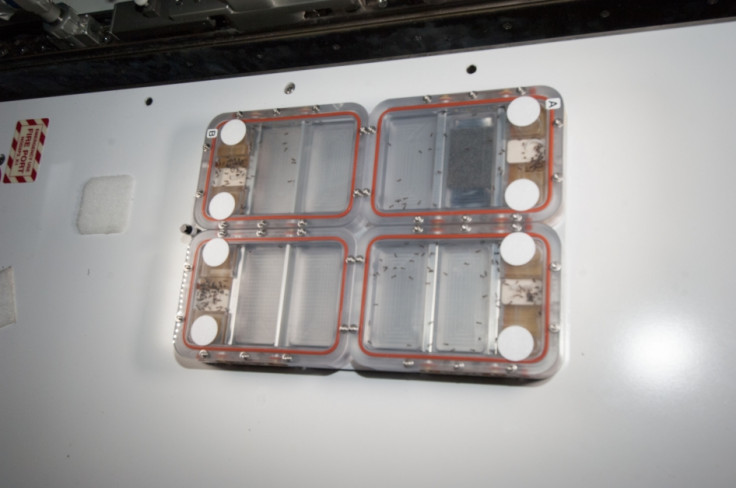Ants Sent to Space to Tell Scientists How to Build Better Robots

After monkeys and dogs, a new species of animal is about to venture into space - ants.
Several colonies of ants have been sent to the International Space Station (ISS) as part of an experiment to observe changes in their foraging behaviour, which will then help scientists develop better communication models for robots.
The ants arrived on the ISS aboard an Orbital Sciences Cygnus spacecraft. Each colony is housed in chambers roughly the shape and size of a tablet computer, capable of carrying between 70 and 100 ants.
A series of barriers can be opened or closed to facilitate or restrict movement across the chambers, increasing or decreasing the ant density in each colony. Cameras will track their movements to relay live videos of their interaction with each other.

Ants navigate and adapt to new environments with minimal cognitive abilities. This feature of ants is being studied to develop effective "distributed algorithm" navigation models for robots, so that they can communicate and move about with minimal programming.
Ants are guided by internal protocols which depend on the density of ants in surrounding areas, and how packed their colonies are. They are able to gauge the densities by smell and the frequency of touching neighbouring ants with their antenna.
When the density of the colony is high, they move in small circles or randomly, but when the density is low, they change their foraging pattern to move in straight lines and so cover more ground.
However, in space where the gravity is low the ants find it difficult to walk, they are not able to bump into each other as frequently and touch other ants with their antennae. This causes a disruption in their communication signals, and they will have to develop new communication and foraging strategies.
Likewise, robotic networks can also face disruption when robots are made to perform manoeuvres in areas with low density of signals, such as burning buildings full of smoke and flames, to search for survivors.
In effect, robotic technology can learn simplistic navigation methodologies by the way ants adapt to un-ideal communication settings in low gravity environments.
The ant experiment was designed by Professor Deborah M. Gordon of Stanford University. She told Space.com that ants will also be studied for biological changes occurring in low-gravity conditions, including the way nutrients circulate around cells and the way genes are expressed.
"We have a lot to learn about how collective behaviour changes in space," said Prof Gordon.
Tara Ruttley, a Nasa associate International Space Station programme scientist, said that the ants' behaviour is being transmitted live to schools in the US.
"There will be cameras watching the ants and that imagery and video will be beamed down to students on the ground", Ruttley said.
"And the students will have their own educational experiments set up in different classrooms around the country".
© Copyright IBTimes 2025. All rights reserved.





















